how to get rid of fire ants in yard
A well-kept lawn is a thing of beauty, and it's the reason we all spend a few hours each week caring for it. Raking up leaves, treating it with weed killer, and of course, mowing the grass to perfection.
This time spent is why it is soul-destroying when you realize ants have invaded and decided to take up residence in your prized patch of turf.
Ants can cause significant damage to your lawn if left untreated, reversing years of tender loving grass care. And not only that, but they can also create problems in other areas of your yard.
So, if you're here to get the lowdown on how to get rid of ants in your lawn or yard, you're in the right place.
We are going to explain everything you need to know about ants. From the signs that they've invaded, to what type of ants are likely to have taken up residence.
Then we will cover the types of products you can use to eradicate them and stop them from coming back.
So, put the kettle on, sit back, relax, and take it all in.
Note: You should check out our accompanying guide to the best ant killers for lawns, to find the best products to solve your yard ant problems!
What You'll Learn
- 1 What are the Signs of Ants in Your Lawn?
- 1.1 Unexplained Bald Patches
- 1.2 They Can Damage the Grass and Make Your Lawn Uneven
- 1.3 An Increase in Plant-Eating Aphids
- 2 Which Ants do You Have? Types of Ants to Look For
- 2.1 Odorous Ant
- 2.2 Ghost Ants
- 2.3 Carpenter Ants
- 2.4 Fire Ants
- 3 How to Find Ant Nests
- 4 What is the Best Ant Bait or Killer?
- 4.1 Ant Baits and Granules
- 4.2 Ant Sprays
- 4.3 Ant Powders
- 5 Killing Ants in Your Lawn With Chemicals / Insecticides
- 5.1 Pyrethroid Pesticides
- 5.2 Borax Based Ant Killers
- 5.3 Organophosphates
- 6 Natural Remedies to Get Rid of Ants in Your Lawn
- 6.1 Boiling Water
- 6.2 Dishwasher Liquid and Olive Oil
- 6.3 Boric Acid and Sugar Bait
- 6.4 White Vinegar
- 7 Once Removed, How to Stop Them Coming Back
- 8 Conclusion
What are the Signs of Ants in Your Lawn?
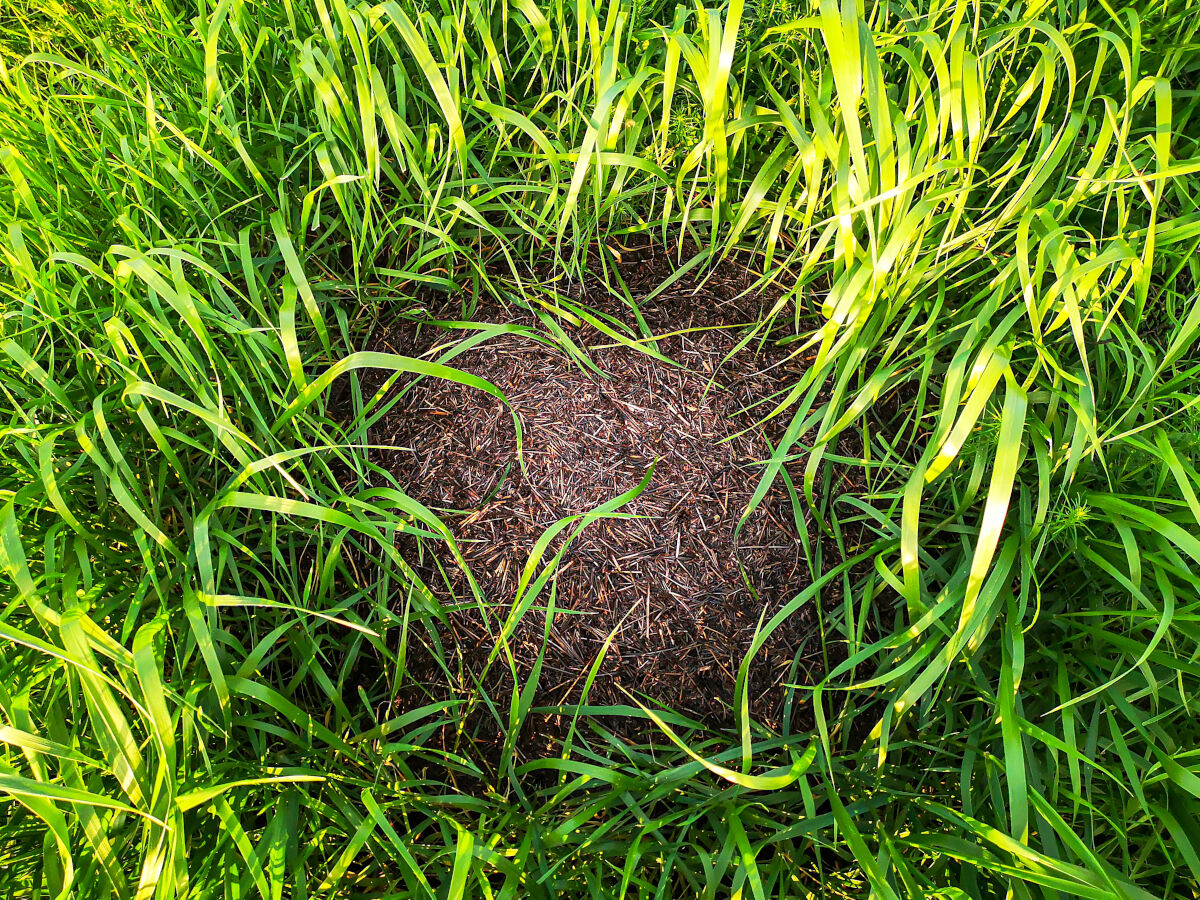
Some signs of an ant infestation are obvious, and others are subtle. Knowing both lets you spot the early signs of an ant colony on the lawn. It also allows you to take action to eradicate them before they create severe damage.
Here's a breakdown of what to look for and what they mean:
Unexplained Bald Patches
Ants tunneling under your lawn will eat through the root zone of the grass as they build extensive colonies.
The extensive open galleries in the colony where the larvae are raised require room, so removing the dirt and grass roots is part of their pesky process.
This causes patches of dead grass to appear. If you haven't spent any time on your lawn in recent weeks, you might wonder what is causing the patches. And there's a good chance it will be ants.
Take a closer look, and you will most likely see an abundance of them in the grass.
They Can Damage the Grass and Make Your Lawn Uneven
As ants excavate beneath the surface of your lawn, they create tunnels and galleries for their cohorts. As such, removed soil is left on the surface as ant hills.
Anthills make it challenging to cut the grass, which leads to an uneven cut. The blades will get stuck on the dirt, and the mower wheels will raise the blades as they roll over the top.
The excavated dirt covering your recently cut grass can deprive it of the sun and cause it to die. Leaving brown dead grass and eventually bald patches.
An Increase in Plant-Eating Aphids
Ants have a favorite sugary food supplement in the honeydew secreted by aphids. The aphids produce it as they suck the sap from plants. Your prized plants, that is!
To maintain a constant supply of aphid honeydew, ants will attack predators, such as ladybirds who eat aphids, to protect them.
In turn, this will often increase the number of aphids leading to extra plant damage.
Which Ants do You Have? Types of Ants to Look For
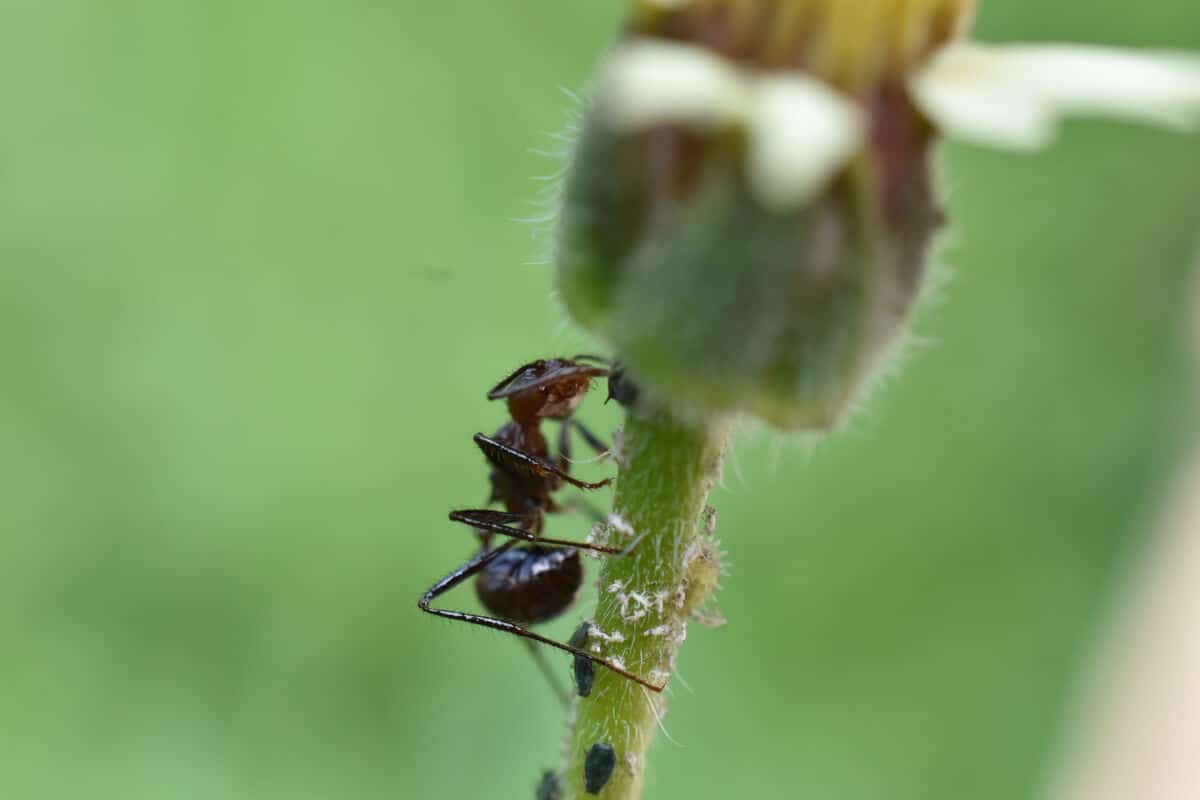
Understanding the type of ant you are dealing with is essential.
Many common species are susceptible to ant killers. But a few are exceptionally hardy and require specially formulated products to eradicate them.
So you need to know the species of ants in your lawn, before you can tackle and get rid of them.
Here are the common types of ant you may encounter in your yard and on your lawn:
Odorous Ant
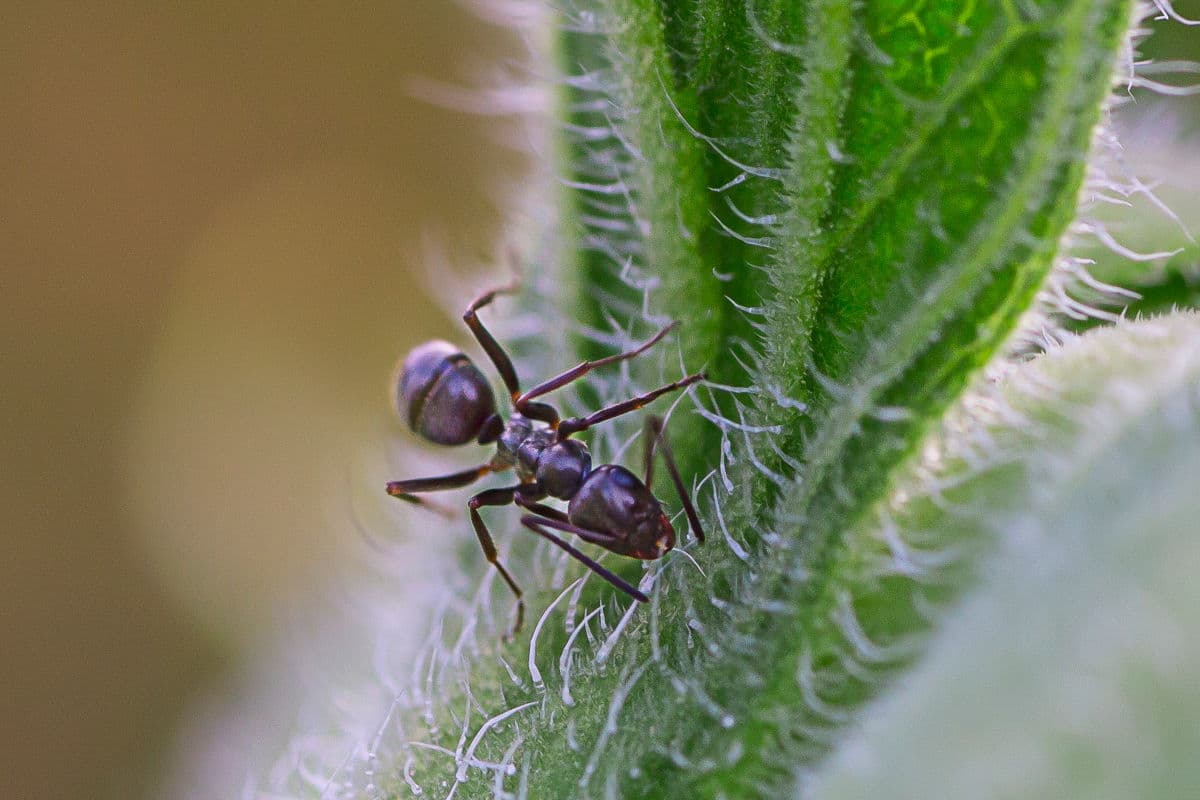
Odorous ants let off a real stink when they're squashed, hence the name.
They are resilient when it comes to ant killing products. They are also known to survive well through adverse weather and food shortages.
If you have these in your yard or under the lawn, you will need a tried and tested ant bait to get rid of them.
They are happy to live both inside and out, so you will need to act fast if you don't want a home invasion on your hands.
Easily identifiable by their unique 12 segment antennae, they are usually brown or black and 2.5 – 3.5mm in size.
Ghost Ants
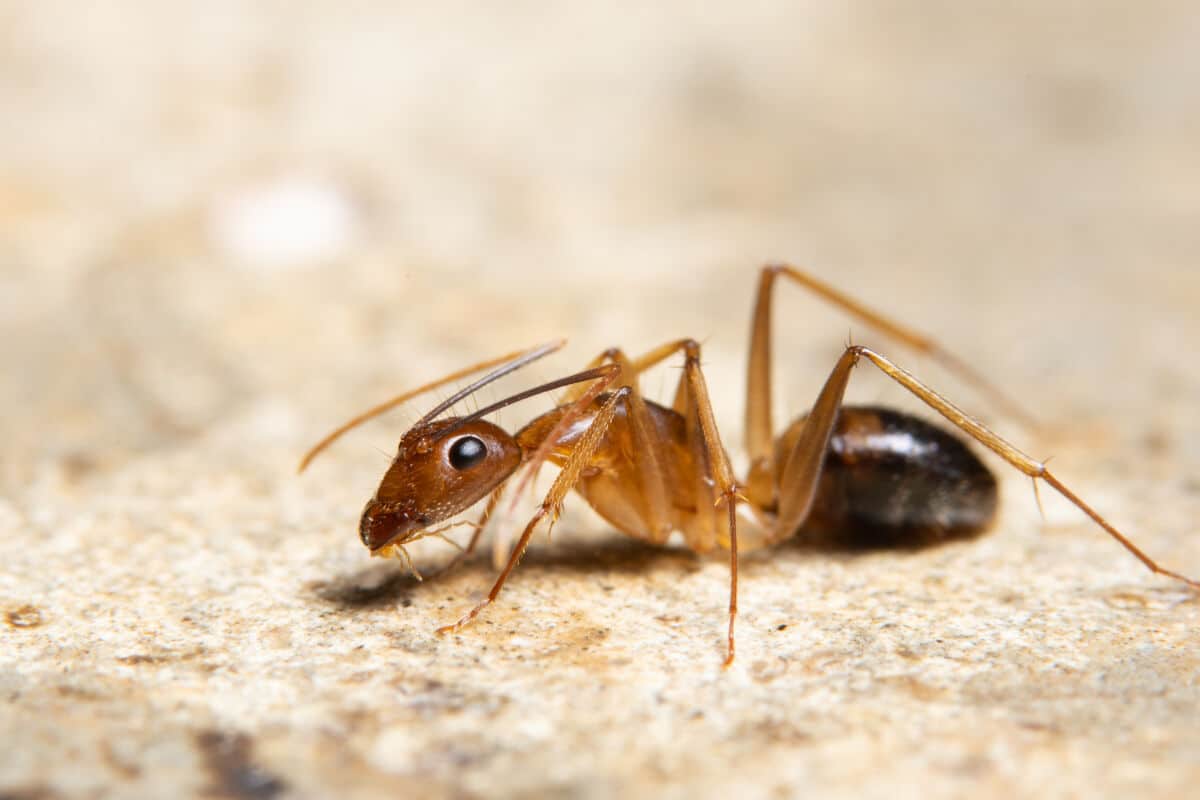
So-called because of their translucent abdomen and legs, the ghost ant can be a difficult one to spot.
On average, they measure 1.5mm in length, which makes them doubly difficult to see, let alone target.
They are a tropical species. If you live in the sunnier, more humid climates, chances are this could be one of many ant species you will encounter.
Most often found happily nesting in yards under rocks and near log piles, they are very active. They can quickly establish multiple colonies underground, causing a lot of damage to lawns in the process.
A borax-containing ant killer is an effective way to bait and kill these little critters.
Carpenter Ants

Carpenter ants are a big problem for the garden and the home. Coming in at 6 to 12mm for workers and 18 to 20mm for mating males and the queen, they are one of the largest ant species you will encounter.
That's great for spotting them, but not so much for getting rid of them. Carpenter ants are a very resilient species that can cause vast amounts of damage when left unchecked.
Identifiable by their large heads and pronounced jaw with its large pincers, it takes a targeted toxic bait to rid your yard of them.
If you don't use the right bait, they will continue to burrow into wood. From trees to tree roots, and even wooden structures such as outbuildings and your home.
By tackling them in the right way, you will save yourself thousands of pounds in the long run.
Fire Ants
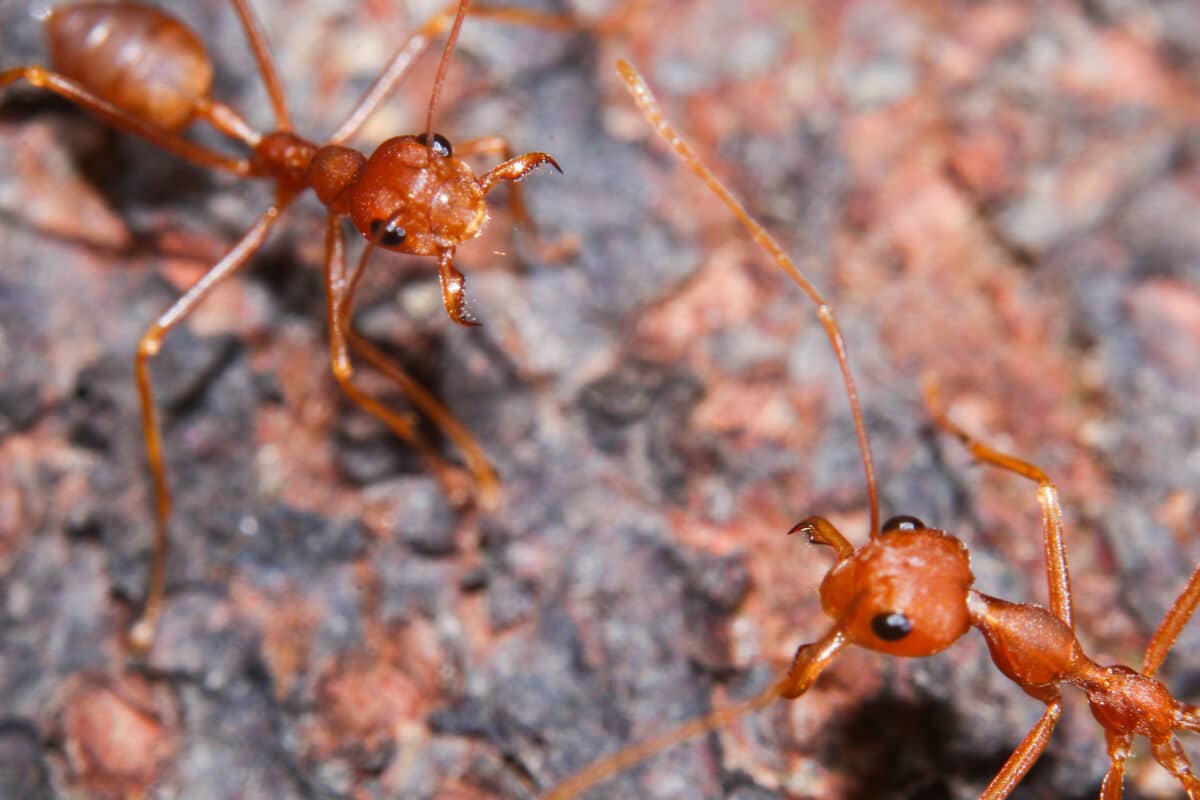
The most common way to deal with a fire ant colony is a pesticide known as pyrethrin. It is an organic compound that naturally occurs in chrysanthemum flowers. It is a proven toxin for ants and other insects.
The fire ant is not only a pesky so-n-so that will create huge ant mounds on your lawn, but they also pack a very nasty sting that will cause a burning sensation for hours afterward.
And, with a single well-established colony containing up to half a million ants, and the possibility of over a hundred mounds in a single acre of land, they are a force to be reckoned with.
They are red and just 1.5 to 6mm in size, so they are distinctive.
By the time they show on your lawn, chances are they have already taken over, and it's time to take immediate action.
How to Find Ant Nests
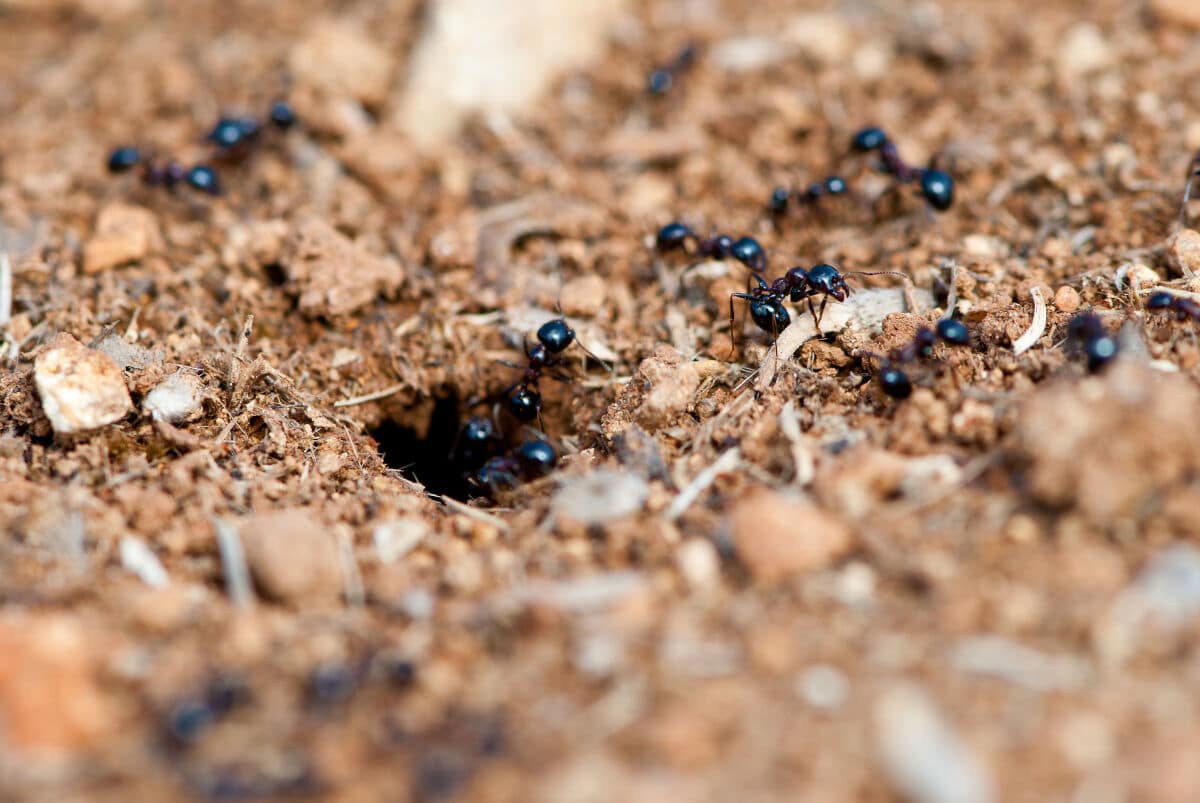
If your lawn and yard are covered in ants, it's time to go after the entire colony. Attacking them at the source is the best way to get rid of them pronto.
But often, finding the settlement is easier said than done. After all, we've all seen ants disappear through cracks in walls and under baseboards.
But persevere. And by following multiple ants across your lawn or yard, you are likely to establish a common area that they appear to head towards and vanish.
All you need is the ballpark area, not an exact location. Anthills make it easy, but if there isn't any, you will need to observe them walking their trails. But be aware that ants rarely walk in a straight line.
Be patient, and you'll eventually be able to narrow down where the nest is.
What is the Best Ant Bait or Killer?
Choosing the right ant control product for your needs from the hundreds available can be a tall order if you're unsure what they are or what they do.
Here are the most common types of products available:
Ant Baits and Granules
This type of ant killer can provide two functions. They are either a granular bait containing slow release poison or a kill on contact granule that ants come in to contact with and die shortly after.
The bait method is proven to be capable of killing many types of ant infestation.
As part of their disguise, they smell and taste like food. Worker ants will gather it and take it back to the colony. And there they will feed it to newborn larvae and the queen, killing the colony.
Outdoors in the yard, both methods can be deployed. You can spread it all over the lawn and wash it in with water for complete coverage as a kill on contact approach.
Or strategically place bait granules near to trails and ant nests for them to gather and feast on.
Head on over to our guide to check out the most effective and best ant bait traps on the market.
Ant Sprays
Ant sprays are a liquid form of ant killer that you spray on directly to kill ants.
It is fast-acting, and it gives instant results for removing them in the areas that cause the most nuisance. Such as your garden furniture or in your greenhouse and outbuildings.
Sprays are handy for localized treatment but not as effective as bait at getting rid of the problem long term.
For the outdoor infestation, soluble granules are available to be mixed with water or designed and packaged as a hose attachment. These allow you to spread the solution much further and kill many more ants.
They can also offer a protective residue that stops ants from returning to the same area. And, if used in tandem with a colony targeted bait, they will help rid the lawn of the immediate masses while the bait tackles the colony.
Check out this guide for the best ant sprays available today.
Ant Powders
These are another form of ant bait, and the ants will ingest or inhale them.
They are minuscule particles that either stick to the ant's body and kill on contact, or they are usually mixed with a sweet-tasting substance to entice the ants to eat it.
They are easy to apply by dusting a perimeter around the home, garden, or the ant nest. The ants then walk through it or eat it, and it is job done.
Powders are usually effective within minutes, a fast acting way to kill ants.
Killing Ants in Your Lawn With Chemicals / Insecticides
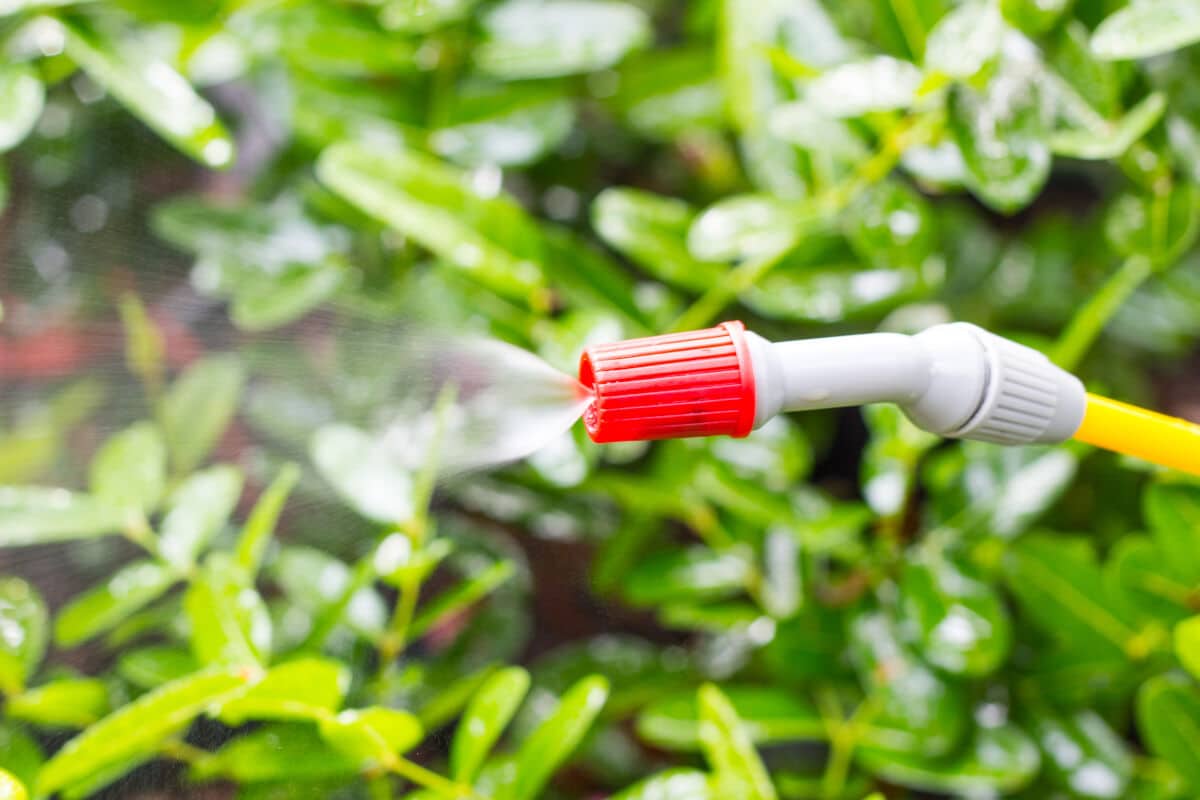
The following are the most commonly used pesticides used in readily available off-the-shelf products.
Pyrethroid Pesticides
These are organic chemical compounds found in chrysanthemum flowers. They are known to be poisonous to insects and mildly toxic to humans and animals.
It is a neurotoxin that attacks the sodium channels of the insects leading to paralysis.
This insecticides group is the commonly used active ingredient in products designed to target the hardier varieties of ants such as carpenter ants.
They often come in the form of gel and granular baits as these are the most effective way to kill the colony.
They are also available in water-soluble lawn treatments and weatherproof granules that can be spread and washed into the soil for immediate eradication of the surface ants.
Borax Based Ant Killers
Borax and boric acid products were traditionally used as cleaning aids and as a cutting agent in many household products.
They are also useful in the war against ants, and they are now the base for many pesticides. Borax, a naturally occurring chemical compound, is incredibly toxic to bugs, plants, and fungi.
Effective against many ant species, it comes in powder form mixed with other ant attractant additives. This helps to mask it as a food source and encourage ants to ingest it.
Organophosphates
These pesticides are chemicals derived from phosphoric acid. They will disrupt the central nervous system causing paralysis and death.
Widely used for both agricultural and private use as an insecticide, they were recently restricted due to their toxicity. Some are still used in safe retail products, such as acephate, which is a popular choice against invasive imported fire ants.
In powdered and water-soluble form, it is effective and easy to apply, which is why it is used in many fire ant products for lawn treatments and ant mound destruction.
Natural Remedies to Get Rid of Ants in Your Lawn

When it comes to killing off ants on your lawn, there are a few home remedies that have stood the test of time. These include.
Boiling Water
Boiling water is an often-suggested quick way to deal with an ant's nest. Find as many entrances as you can and pour boiling water into them.
The drawback is that it can scald your grass, causing it to turn brown.
Dishwasher Liquid and Olive Oil
Another common homemade application is washing up liquid mixed with olive oil and water. Quite simply, it penetrates the ants' exoskeleton and suffocates it.
The downside is that it can take a while to work, and the detergent may cause pale patches on the lawn.
Boric Acid and Sugar Bait
Mix them into a paste, and the sweet sugar attracts the ants, and the boric acid kills the ants. Slow acting, it will be taken back to the nest as any other bait would.
The problem is, if mixed poorly with too little boric acid, it won't kill the ants. Too much, and they'll die before they get back to the nest.
White Vinegar
Some recommend pouring a liter of white vinegar onto an ant's nest. It will kill a few ants on contact, but the downside is that it is unlikely to penetrate deep enough to kill the colony.
Once Removed, How to Stop Them Coming Back
Deterring ants once you have eradicated them can be done in a few different ways.
Several preventative products will create a barrier repellant that stops ants from returning to the area. They will need to be applied a few times a year but can remain active for up to six months.
You can also use natural oils and citrus fruits to deter ants from the yard and home. Strategically placing citrus peel and aromatic sprays around the yard will stop ants in their tracks and make them look elsewhere for a place to forage.
The trick is knowing that you will never fully eradicate ants from your yard. But repelling them by making your yard and home less attractive than your neighbors is usually enough to keep them at bay.
Conclusion
There you have it, the theory, the science, and the methodology for regaining your lawn as a place to relax. Not for them to do as they please and waste all that time and effort spent on your beautiful lawn.
Hopefully, you will have realized that ants are a necessary evil that you will never completely eradicate despite showing you how to treat your lawn and yard effectively.
So, learn to love them in small numbers and allow them to play their part in the ecosystem of the garden, but be ready to declare war if they overstep the mark.
Do you have any other tips and tricks that worked for you and your luscious lawn? We'd love to hear in the comments below.
Happy hunting!
how to get rid of fire ants in yard
Source: https://www.gopests.com/get-rid-of-ants-in-lawn-and-yard/
Posted by: prindlelareltat.blogspot.com

0 Response to "how to get rid of fire ants in yard"
Post a Comment